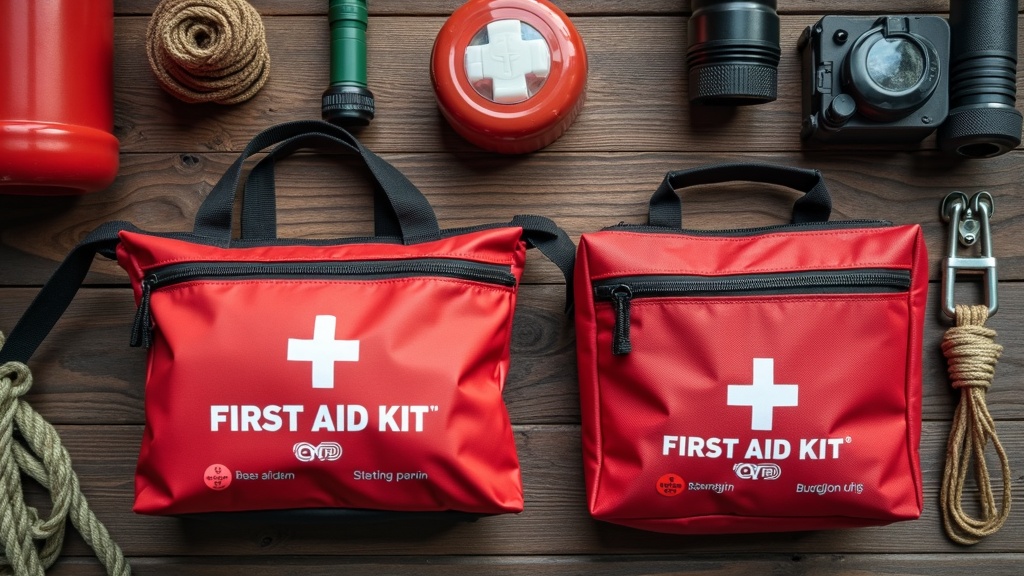Carrying a first aid kit can make all the difference when small accidents or unexpected emergencies pop up. I like the peace of mind that comes with knowing I’m not caught off guard, whether I’m on a short hike, at a family picnic, or setting up a big base camp in the woods. Choosing the right first aid kit is a really practical step for anyone who values safety and wants to be ready when plans take a sudden turn.

Understanding First Aid Kits: Not Just a Box of Bandages
First aid kits have changed a lot from the days when they were simply a tin box with a few plasters and a bottle of antiseptic. Now, I see kits designed for all sorts of needs, from tiny pouches that fit in my backpack to larger, much more all-in-one boxes for group trips or base camp setups. Knowing what I actually need, before an outing, helps prevent me from carrying too little, or too much.
Modern first aid kits often come with clear compartments, waterproof cases, and supplies that are useful for outdoor adventures. The best kits balance compactness with enough supplies to handle common injuries. Having the right supplies means I can help myself or others quickly and effectively instead of scrambling or feeling helpless.
Backpack Friendly Kits vs. Base Camp Kits
When choosing a kit, I think about how and where I’ll be using it. For a short-day hike or cycling trip, I pick a compact, lightweight kit that won’t weigh me down. These backpack friendly kits usually contain things like assorted bandages, small dressings, antiseptic wipes, a pair of gloves, tweezers, medical tape, and some pain relief tablets. They’re designed to cover cuts, scrapes, blisters, and minor burns or sprains.
For longer trips, family outings, or base camp situations, a larger kit is a better choice. These typically include everything in a backpack kit but go further, adding things like eye wash, finger splints, trauma pads, a CPR mask, more medications, and sometimes even a small emergency manual. Some kits have items for multiple people or cover more serious injuries like deep cuts or broken bones. Larger kits take up more room, but when I’m at a fixed camp or traveling with a group, it feels worth it because everyone can rely on a single set of resources.
- Small Backpackable Kits: Best for individuals or pairs, lightweight, easy to carry, covers minor injuries.
- Base Camp Kits: Ideal for groups or extended stays, more supplies, includes gear for serious injuries and emergencies.
Essentials to Always Keep in Your First Aid Kit
Bandages and Gauze: For covering wounds or stopping bleeding.
Medical Tape: To secure bandages.
Scissors: To cut medical tape or clothing if needed.
Antiseptic Wipes: To clean cuts.
Iodine: To prevent infection.
Antibiotic Ointment: Also to prevent infection.
Pain and Allergy Relief: Ibuprofen, acetaminophen, and some antihistamine tablets.
Blister Care: Moleskin or blister pads for hiking.
Tweezers: For removing splinters or ticks.
Disposable Gloves: Protection for me and anyone I help.
Small Emergency Manual: A quick guide helps when nerves hit during emergencies.
I personally love to bring duct tape as well, because as they say… It is good for just about everything! For base camp use, I sometimes add a thermal blanket, bigger trauma bandages, a finger splint, and extra medications, especially if the group has specific medical needs. It’s also smart to consider any unique factors such as an insulin kit for a member with diabetes or serious allergies requiring an EpiPen. Customizing a kit for the group can give a boost to everyone’s safety and confidence.
Picking a Kit: Features That Matter
Even high-quality kits can fall short if they’re missing the right features. These are things I look for when making a purchase or assembling my own kit:
- Weatherproof Materials: Keeps everything dry if the kit gets dropped or rained on.
- Clear Organization: Easy to find compartments help me grab what I need when time matters most.
Careful research helps buyers track down kits that fit their budget and plans. Some outdoors brands even sell specialty kits for activities like biking, boating, or climbing. Checking online reviews and user feedback can also shed light on how reliable and user-friendly a kit really is in the field.
Keeping Kits Stocked and Ready
Medical supplies and medications can expire or get used up over time. It’s also good to check that nothing has gotten wet, molded, or broken. For longer trips or group adventures. Swapping out old items for fresh ones makes sure I’m really ready to help when it counts. Some items, like adhesive bandages, lose their stickiness with age, and medications must always be current to work safely.
Final Thoughts: Staying Ready Means Staying Safe
Accidents can happen pretty much anywhere, so being prepared is smart, not just for yourself but for everyone around you. Picking the right sized kit, keeping it stocked, and knowing how to use it makes a difference. For more tips about outdoor safety and health, trusted resources like Red Cross offer helpful guidelines and supply lists. Staying sharp, thinking ahead, and sharing first aid knowledge with your group can give a boost to every outdoor adventure, turning emergencies into manageable moments and stress into a sense of readiness.
